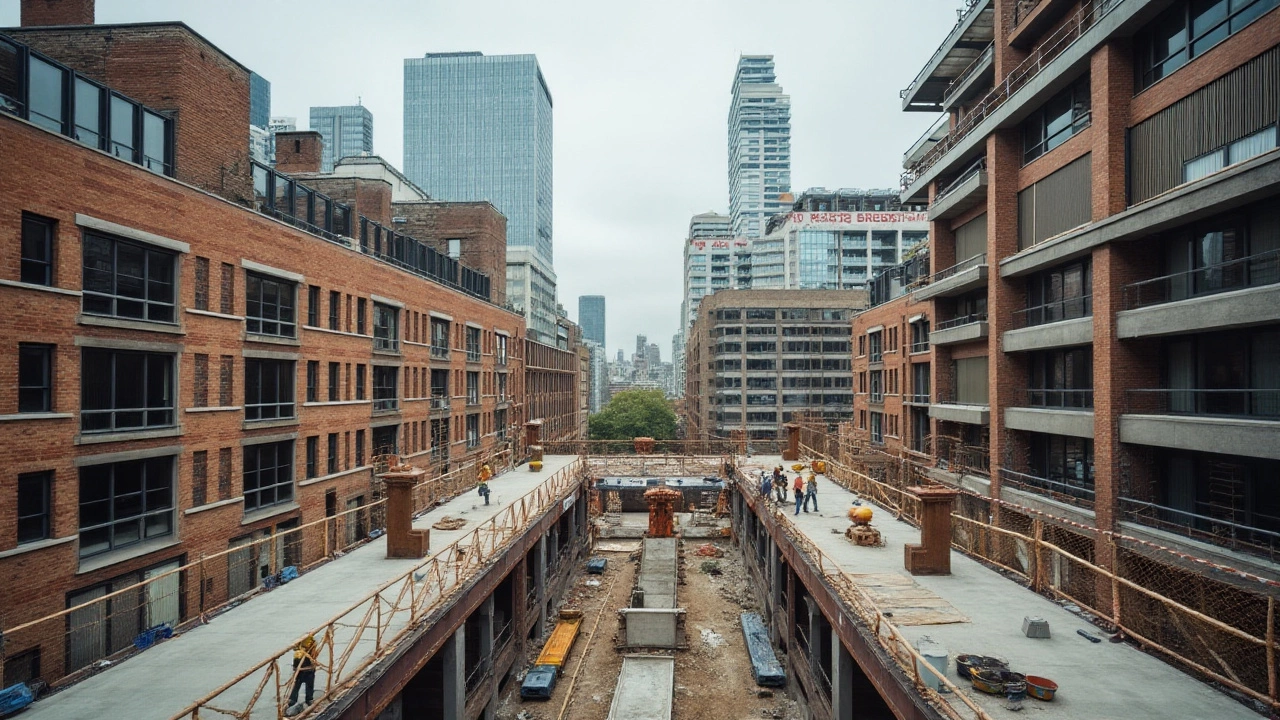Construction Materials: The Foundation of Every Home Project
When working with construction materials, the raw and processed substances used to build, remodel, or repair structures. Also known as building materials, they form the backbone of any home improvement project. Key categories include structural components, beams, columns, and load‑bearing walls that give a building its strength, sustainable materials, recycled wood, low‑VOC paints, and eco‑friendly insulation that reduce environmental impact, and building supplies, fasteners, sealants, and accessories that complete a project.
Why Choosing the Right Materials Matters
Understanding construction materials isn’t just for architects; anyone tackling a DIY renovation benefits from knowing what they’re putting together. The right structural components influence a building’s durability, while sustainable materials can lower long‑term energy bills. Choosing quality building supplies speeds up installation and reduces future repairs. In short, the materials you pick dictate how long a project lasts, how much it costs, and how it looks.
Construction materials encompass a wide range of products, from concrete blocks to decorative tiles. Each type has specific attributes: strength, fire resistance, moisture tolerance, and aesthetic appeal. For example, hardwood flooring offers natural beauty and durability, but it’s pricier than engineered alternatives. Meanwhile, insulated plasterboard adds thermal performance without sacrificing wall thickness. Matching these attributes to project goals creates a solid foundation for success.
Home renovation projects require careful coordination of multiple material families. When you combine structural components with finishing supplies, you’ll notice how one decision affects another. Using moisture‑resistant drywall in a bathroom pairs well with waterproof sealants, preventing mold growth. Similarly, integrating sustainable insulation with low‑VOC paints improves indoor air quality. These inter‑dependencies demonstrate why a holistic view of construction materials is essential.
Beyond durability, the environmental impact of your choices is growing in importance. Sustainable materials like reclaimed timber or bamboo flooring reduce waste and lower carbon footprints. They also often qualify for green‑building certifications, which can raise property value. Pairing these eco‑friendly options with energy‑efficient fixtures creates a home that’s both stylish and responsible.
Practical tips for selecting the right materials start with a clear project brief. Identify the primary function—load‑bearing, waterproofing, insulation—and then filter options by performance data. Visit local suppliers, ask for product certifications, and compare warranties. Don’t overlook the small but crucial building supplies; quality nails, screws, and adhesives can make or break a job.
Finally, maintenance considerations should influence every purchase. Materials that resist staining, wear, and humidity require less upkeep, saving you time and money. For instance, a high‑quality epoxy floor finishes last longer than standard sealants, meaning fewer re‑coatings over the years. Knowing how a material behaves over time helps you budget not just for installation, but for its entire lifespan.
Below you’ll find a curated collection of articles that dive deeper into specific material choices, DIY tricks, and expert advice. Whether you’re planning a full‑scale remodel or a weekend upgrade, these resources provide the insight you need to pick the right construction materials and get the job done right.
Top Construction Materials in Modern Building
Construction materials are the backbone of any building project, shaping everything from design to sustainability. This article delves into the types of materials used today, shedding light on common choices like concrete and timber, as well as innovative materials like self-healing concrete and recycled plastics. Understanding these materials helps professionals make informed decisions to enhance durability and environmental friendliness. The article also offers practical tips on choosing the right materials for different projects.
full articleUnderstanding Type 5 Construction in Commercial Buildings
Type 5 construction, commonly known as wood-frame construction, is frequently utilized in creating various commercial structures. This construction type is favored for its cost-effectiveness and versatility, accommodating a range of designs and layouts. However, its use comes with particular fire risk considerations, necessitating specific safety measures. Understanding the benefits and limitations of Type 5 construction can lead to more informed decisions in commercial building projects.
full article





